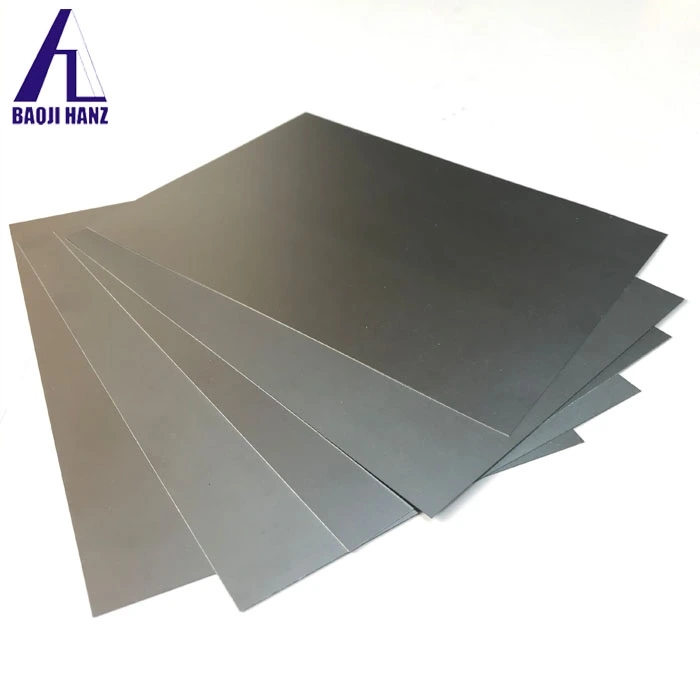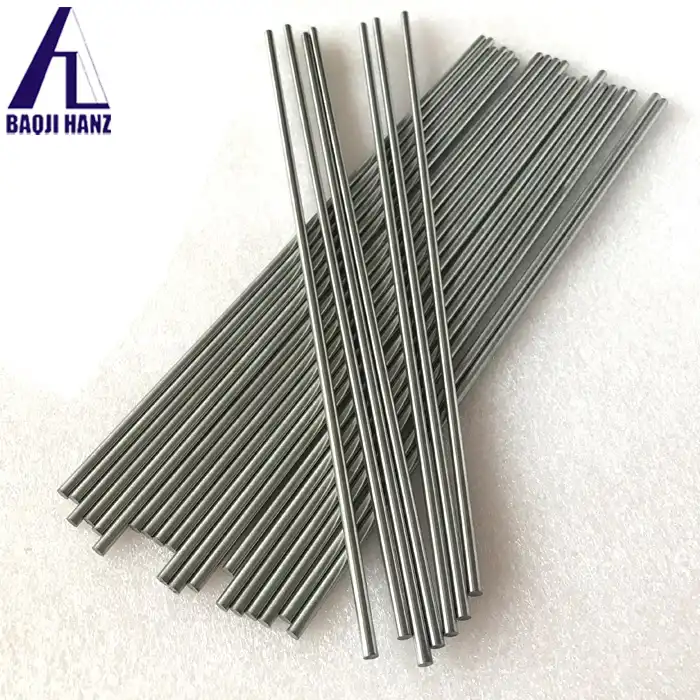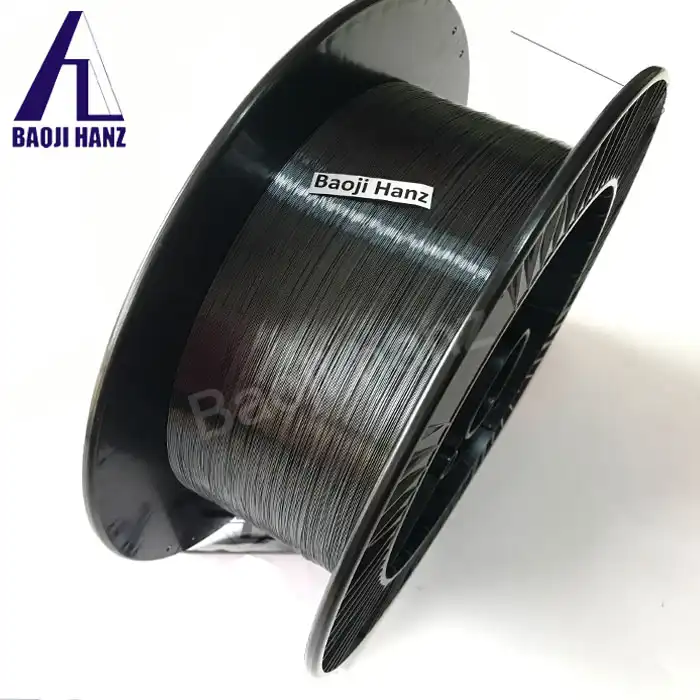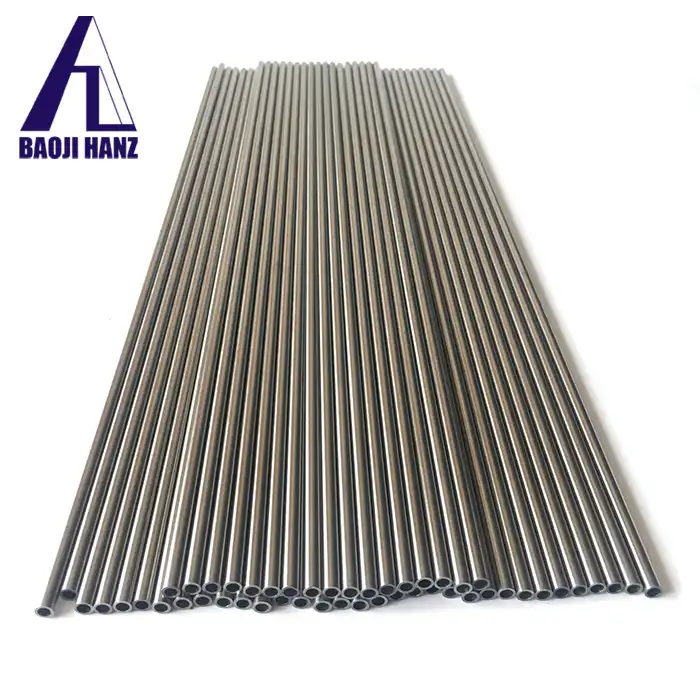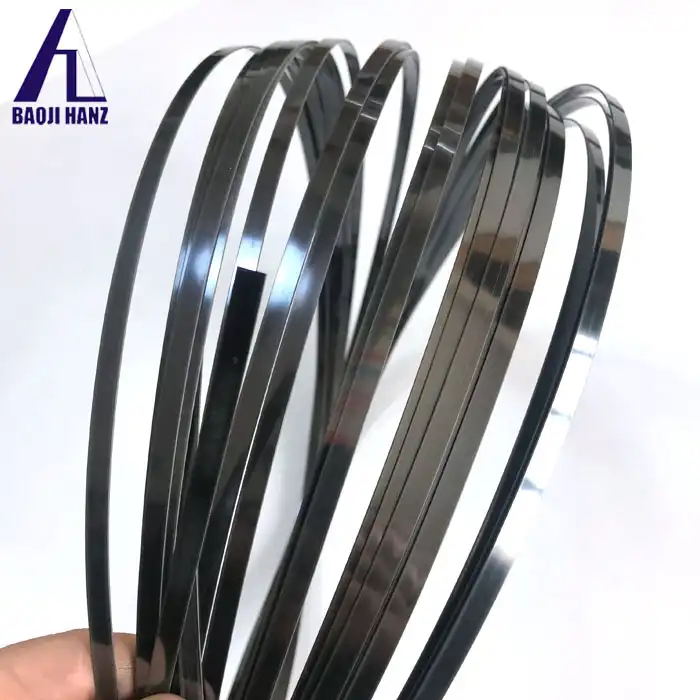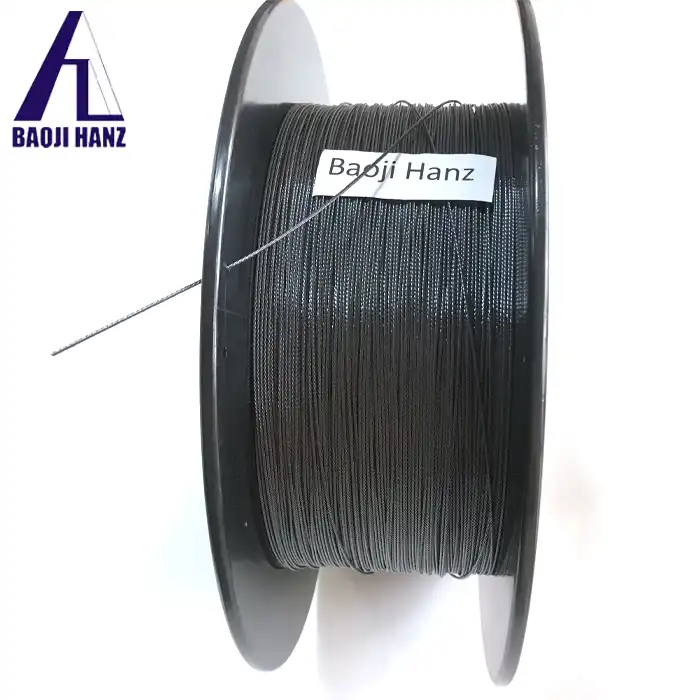Are OEM Nitinol compression springs durable?
2025-02-22 00:08:14
Nitinol compression springs have garnered significant attention in various industries due to their unique properties and exceptional performance. As manufacturers and engineers seek reliable components for their products, the question of durability often arises. This blog delves into the world of OEM Nitinol compression springs, exploring their composition, characteristics, and longevity. We'll examine the factors that contribute to their durability, compare them to traditional spring materials, and discuss their applications across different sectors. By the end of this article, you'll have a comprehensive understanding of why OEM Nitinol compression springs are considered a game-changer in spring technology and how they can benefit your specific applications.
Understanding OEM Nitinol Compression Springs
The Composition of Nitinol
Nitinol, a portmanteau of Nickel Titanium Naval Ordnance Laboratory, is an extraordinary alloy that has revolutionized the world of materials science. This remarkable material is composed of nearly equal parts nickel and titanium, typically consisting of approximately 55% nickel and 45% titanium. The precise ratio of these elements can be adjusted to fine-tune the alloy's properties, making it adaptable to a wide range of applications. The unique atomic structure of Nitinol gives rise to its shape memory and superelastic properties, which are pivotal in the creation of high-performance compression springs. The crystalline structure of Nitinol undergoes a phase transformation when subjected to temperature changes or mechanical stress. This transformation occurs between two solid phases: the high-temperature austenite phase and the low-temperature martensite phase. The ability to switch between these phases is the key to Nitinol's shape memory effect and superelasticity. In the austenite phase, the material is strong and rigid, while in the martensite phase, it becomes more flexible and ductile. This dual-phase nature allows Nitinol springs to exhibit unparalleled resilience and recovery, even after substantial deformation. Moreover, the composition of Nitinol contributes to its exceptional corrosion resistance. The presence of titanium in the alloy forms a protective oxide layer on the surface, shielding the material from harsh environmental conditions. This inherent corrosion resistance makes Nitinol springs particularly suitable for applications in corrosive environments, such as marine or medical settings, where traditional spring materials might falter.
Manufacturing Process of OEM Nitinol Springs
The production of OEM Nitinol compression springs is a sophisticated process that requires precision and expertise. The journey begins with the careful melting and alloying of nickel and titanium in vacuum induction furnaces. This step is crucial to ensure the purity and homogeneity of the alloy, as even slight variations in composition can significantly affect the final properties of the springs. Once the alloy is formed, it undergoes a series of hot and cold working processes to achieve the desired shape and dimensions. This may involve techniques such as drawing, rolling, or extrusion. The material is then wound into a spring shape using specialized equipment that can handle the unique properties of Nitinol. Unlike conventional spring materials, Nitinol requires careful temperature control during the winding process to prevent unwanted shape setting. After winding, the springs undergo a critical heat treatment process known as shape setting. This involves heating the springs to a specific temperature, typically between 400°C and 550°C, for a predetermined duration. The shape-setting process is what imparts the "memory" to the Nitinol springs, allowing them to return to their programmed shape even after significant deformation. The precise parameters of the heat treatment are closely guarded trade secrets among manufacturers, as they directly influence the performance characteristics of the springs.
Unique Properties of Nitinol Compression Springs
Nitinol compression springs possess a suite of extraordinary properties that set them apart from conventional spring materials. At the forefront is their shape memory effect, which allows these springs to return to their original shape after being deformed, simply by applying heat. This characteristic enables Nitinol springs to recover from large strains without permanent deformation, a feature that is particularly valuable in applications requiring repeated cycles of compression and expansion. Superelasticity is another hallmark property of Nitinol springs. This attribute allows the springs to undergo substantial deformation – up to 8% strain – and still return to their original shape upon unloading. Conventional metal springs, in contrast, typically have an elastic limit of less than 1%. The superelastic behavior of Nitinol springs translates to exceptional fatigue resistance, as they can withstand millions of cycles without significant degradation in performance. The biocompatibility of Nitinol is a crucial property that opens up a myriad of applications in the medical field. The alloy's resistance to corrosion in bodily fluids, coupled with its non-toxic nature, makes it an ideal material for implantable devices and surgical instruments. Furthermore, the hysteresis exhibited by Nitinol springs – the difference in the loading and unloading paths on a stress-strain curve – provides excellent damping characteristics, making them suitable for vibration control applications.
Factors Influencing the Durability of OEM Nitinol Compression Springs
Material Purity and Composition
The durability of OEM Nitinol compression springs is intrinsically linked to the purity and precise composition of the alloy used in their manufacture. The ratio of nickel to titanium, as well as the presence of any trace elements, can significantly impact the spring's performance and longevity. High-purity Nitinol, with carefully controlled elemental ratios, exhibits superior mechanical properties and transformation characteristics. Impurities or deviations from the optimal composition can lead to inconsistencies in the spring's behavior, potentially compromising its durability. The presence of oxygen, carbon, or nitrogen impurities can alter the transformation temperatures of Nitinol, affecting its shape memory and superelastic properties. These impurities can also lead to the formation of undesirable precipitates within the alloy's microstructure, which may act as stress concentration points and initiate premature fatigue failure. Therefore, reputable OEM manufacturers employ rigorous quality control measures to ensure the highest level of material purity and compositional accuracy. Furthermore, the inclusion of ternary elements, such as copper or iron, in small quantities can be used to fine-tune the properties of Nitinol springs for specific applications. For instance, the addition of copper can lower the hysteresis and increase the transformation temperature range, potentially enhancing the spring's performance in certain environments. However, these modifications must be carefully balanced to maintain the overall durability and reliability of the spring.
Heat Treatment and Shape Setting
The heat treatment process, particularly the shape-setting stage, is a critical factor in determining the durability of OEM Nitinol compression springs. This process not only imparts the desired shape to the spring but also establishes its fundamental mechanical properties. The temperature, duration, and cooling rate of the heat treatment must be meticulously controlled to achieve optimal results. Improper heat treatment can lead to inconsistent shape memory behavior, reduced superelasticity, or even structural defects that compromise the spring's durability. During shape setting, the crystalline structure of Nitinol undergoes reorganization, aligning the atoms in a configuration that "remembers" the desired spring shape. The precision of this process directly influences the spring's ability to return to its original form after deformation. If the shape-setting parameters are not optimized, the spring may exhibit incomplete shape recovery or require higher temperatures to activate the shape memory effect, potentially limiting its practical applications and lifespan. Advanced heat treatment techniques, such as differential scanning calorimetry (DSC) guided processes, allow manufacturers to tailor the transformation temperatures and mechanical properties of Nitinol springs with unprecedented accuracy. This level of control enables the production of springs with enhanced durability, capable of maintaining their performance characteristics over extended periods and under diverse operating conditions.
Surface Treatment and Finishing
The surface condition of OEM Nitinol compression springs plays a crucial role in their overall durability and performance. While Nitinol inherently possesses good corrosion resistance due to the formation of a protective titanium oxide layer, additional surface treatments can further enhance this property and improve the spring's longevity. Various finishing techniques are employed to optimize the surface characteristics of Nitinol springs, each contributing to different aspects of durability. Electropolishing is a commonly used surface treatment that removes a thin layer of material from the spring's surface, resulting in a smooth, oxide-rich finish. This process not only improves the spring's corrosion resistance but also eliminates surface imperfections that could act as stress concentration points, thereby enhancing fatigue resistance. Additionally, electropolishing can reduce friction between the spring coils, minimizing wear and extending the operational life of the spring. Passivation treatments, such as citric acid passivation or nitric acid passivation, are employed to further strengthen the protective oxide layer on Nitinol springs. These treatments create a more stable and uniform oxide film, providing superior resistance to pitting corrosion and other forms of chemical attack. For applications in particularly aggressive environments, advanced coatings like titanium nitride (TiN) or diamond-like carbon (DLC) can be applied to Nitinol springs, offering exceptional wear resistance and biocompatibility.
Applications and Performance of OEM Nitinol Compression Springs
Industrial and Automotive Applications
OEM Nitinol compression springs have found a plethora of applications in the industrial and automotive sectors, where their unique properties offer significant advantages over traditional spring materials. In industrial settings, these springs are increasingly used in valve actuators, where their superelastic behavior allows for compact designs and extended service life. The ability of Nitinol springs to operate reliably over a wide temperature range makes them ideal for use in extreme environments, such as deep-sea oil exploration equipment or high-temperature processing plants. In the automotive industry, Nitinol compression springs are revolutionizing suspension systems and engine components. Their superior fatigue resistance and ability to store large amounts of elastic energy in a compact form factor enable the design of more efficient and lightweight vehicles. For instance, Nitinol springs in shock absorbers can provide adaptive damping characteristics, adjusting their stiffness in response to road conditions and improving both ride comfort and handling performance. The aerospace sector has also embraced Nitinol compression springs for their exceptional strength-to-weight ratio and reliability under extreme conditions. These springs are used in landing gear assemblies, where their ability to absorb large amounts of energy during compression helps mitigate landing impact forces. Additionally, Nitinol springs find applications in satellite deployment mechanisms, where their shape memory properties allow for compact storage during launch and reliable expansion in space.
Medical and Biomedical Applications
The biocompatibility and unique mechanical properties of Nitinol have made OEM compression springs indispensable in various medical and biomedical applications. In orthodontics, Nitinol archwires and springs provide constant, gentle forces for tooth movement, significantly reducing treatment times and patient discomfort compared to traditional materials. The superelastic nature of these springs allows for large deflections without permanent deformation, enabling more efficient and comfortable orthodontic treatments. Minimally invasive surgical procedures have been transformed by the use of Nitinol compression springs in medical devices. Stents, which are used to keep blood vessels open, often incorporate Nitinol springs that can be compressed into a small diameter for insertion and then expand to their pre-set shape once in place. This self-expanding property reduces the risk of vessel damage during deployment and ensures a secure fit within the vessel. Similarly, Nitinol springs are used in atrial septal defect occluders, vena cava filters, and other implantable devices where their shape memory and superelastic properties are crucial for successful deployment and long-term performance. In the field of prosthetics and orthotics, Nitinol compression springs are utilized to create more natural and responsive artificial limbs and supportive devices. The springs can mimic the elastic properties of human tendons and ligaments, providing a more biomimetic response in prosthetic joints. Additionally, the temperature-dependent properties of Nitinol can be harnessed to create adaptive prosthetics that adjust their stiffness or shape in response to the wearer's body temperature or environmental conditions.
Long-term Performance and Reliability
The long-term performance and reliability of OEM Nitinol compression springs have been extensively studied and validated across various applications. These springs have demonstrated remarkable durability, often outlasting traditional spring materials in demanding environments. The fatigue life of properly manufactured Nitinol springs can extend to millions of cycles, making them suitable for applications requiring high reliability and minimal maintenance. In corrosive environments, such as marine applications or exposure to bodily fluids, Nitinol springs maintain their integrity and functional properties far longer than conventional steel or titanium springs. This corrosion resistance, coupled with their inherent biocompatibility, ensures consistent performance in long-term implantable medical devices, where reliability is paramount. Studies have shown that Nitinol springs can maintain their shape memory and superelastic properties for decades, with minimal degradation in performance. The thermal stability of Nitinol compression springs contributes significantly to their long-term reliability. Unlike many traditional spring materials that may lose their elastic properties or undergo dimensional changes at elevated temperatures, Nitinol springs can operate consistently across a wide temperature range. This thermal stability ensures that the springs maintain their designed performance characteristics even in applications subject to temperature fluctuations, such as automotive or aerospace systems.
Conclusion
OEM Nitinol compression springs have proven to be exceptionally durable and reliable across a wide range of applications. Their unique properties, including shape memory and superelasticity, coupled with proper manufacturing techniques and surface treatments, contribute to their outstanding longevity. From industrial to medical applications, these springs consistently outperform traditional materials, offering enhanced functionality and extended service life. As technology continues to advance, the durability and versatility of Nitinol springs will undoubtedly lead to even more innovative applications in the future. If you want to get more information about this product, you can contact us at baojihanz-niti@hanztech.cn.
Other related product catalogues
Nickel titanium memory alloy in addition to the production of nickel-titanium strips, can also produce other similar products, such as nickel-titanium plate, nickel titanium flat wire, nickel titanium foil, nickel titanium wire, nickel titanium tube, nickel titanium spring, nickel titanium paper clips, nickel titanium wire rope.
|
|
|
|
|
|
|
|
References
1. Johnson, A. D., & Quandt, E. (2019). "Shape Memory and Superelastic Alloys: Applications and Technologies". Woodhead Publishing.
2. Pelton, A. R., Duerig, T., & Stöckel, D. (2000). "A guide to shape memory and superelasticity in Nitinol medical devices". Minimally Invasive Therapy & Allied Technologies, 9(2), 107-118.
3. Miyazaki, S., & Otsuka, K. (1989). "Development of shape memory alloys". ISIJ international, 29(5), 353-377.
4. Morgan, N. B. (2004). "Medical shape memory alloy applications—the market and its products". Materials Science and Engineering: A, 378(1-2), 16-23.
5. Mohd Jani, J., Leary, M., Subic, A., & Gibson, M. A. (2014). "A review of shape memory alloy research, applications and opportunities". Materials & Design, 56, 1078-1113.
6. Lagoudas, D. C. (Ed.). (2008). "Shape memory alloys: modeling and engineering applications". Springer Science & Business Media.
